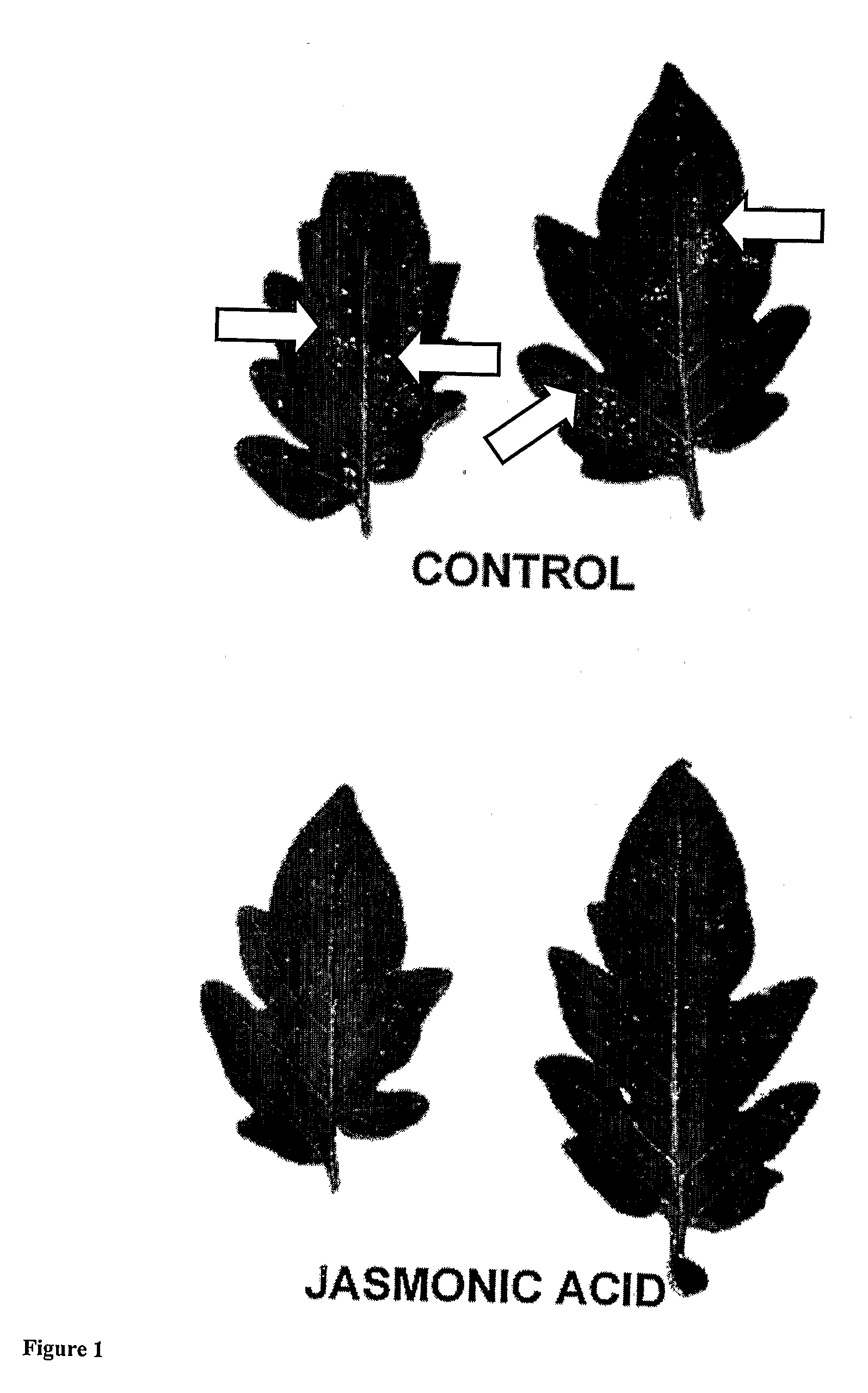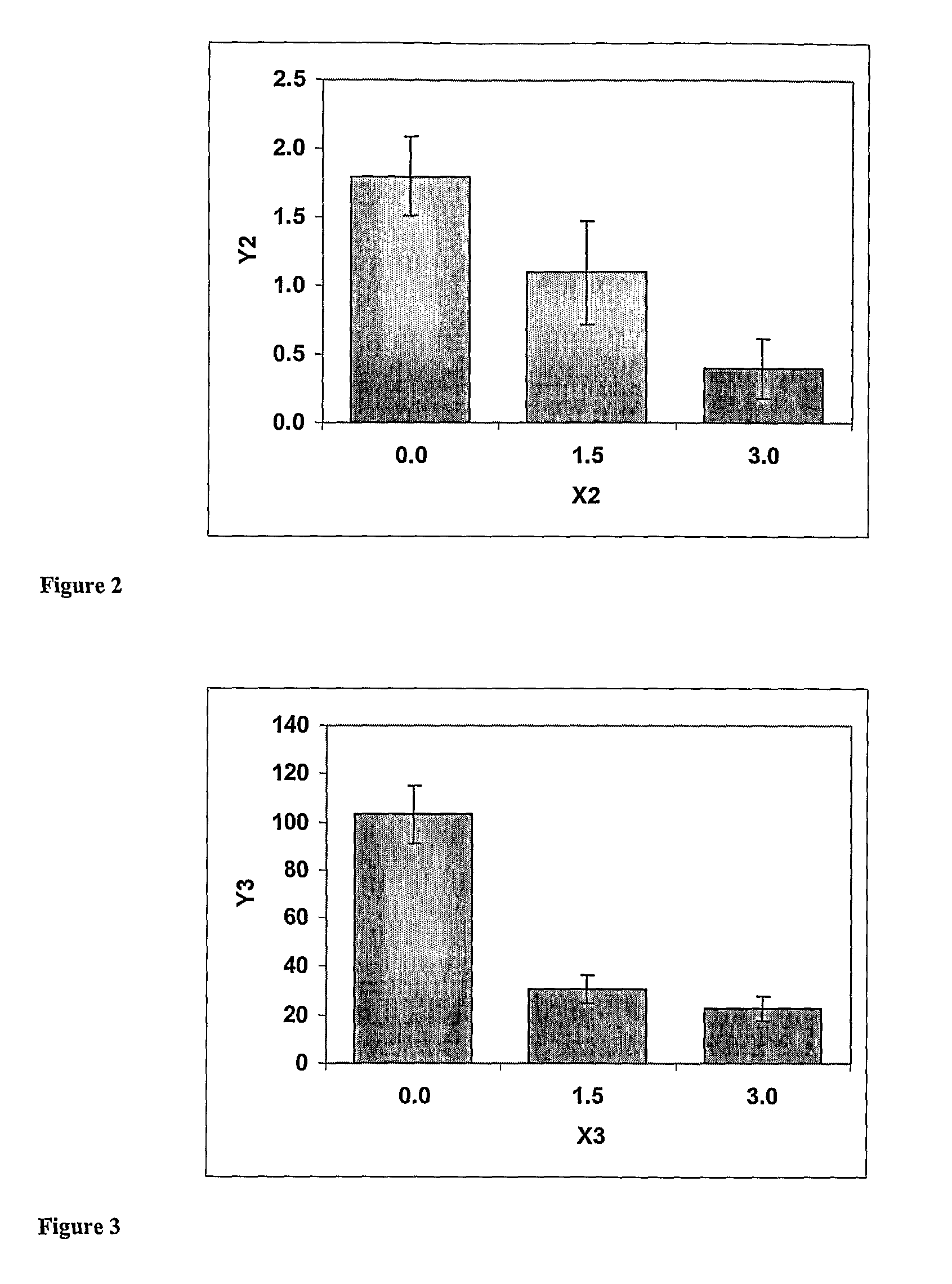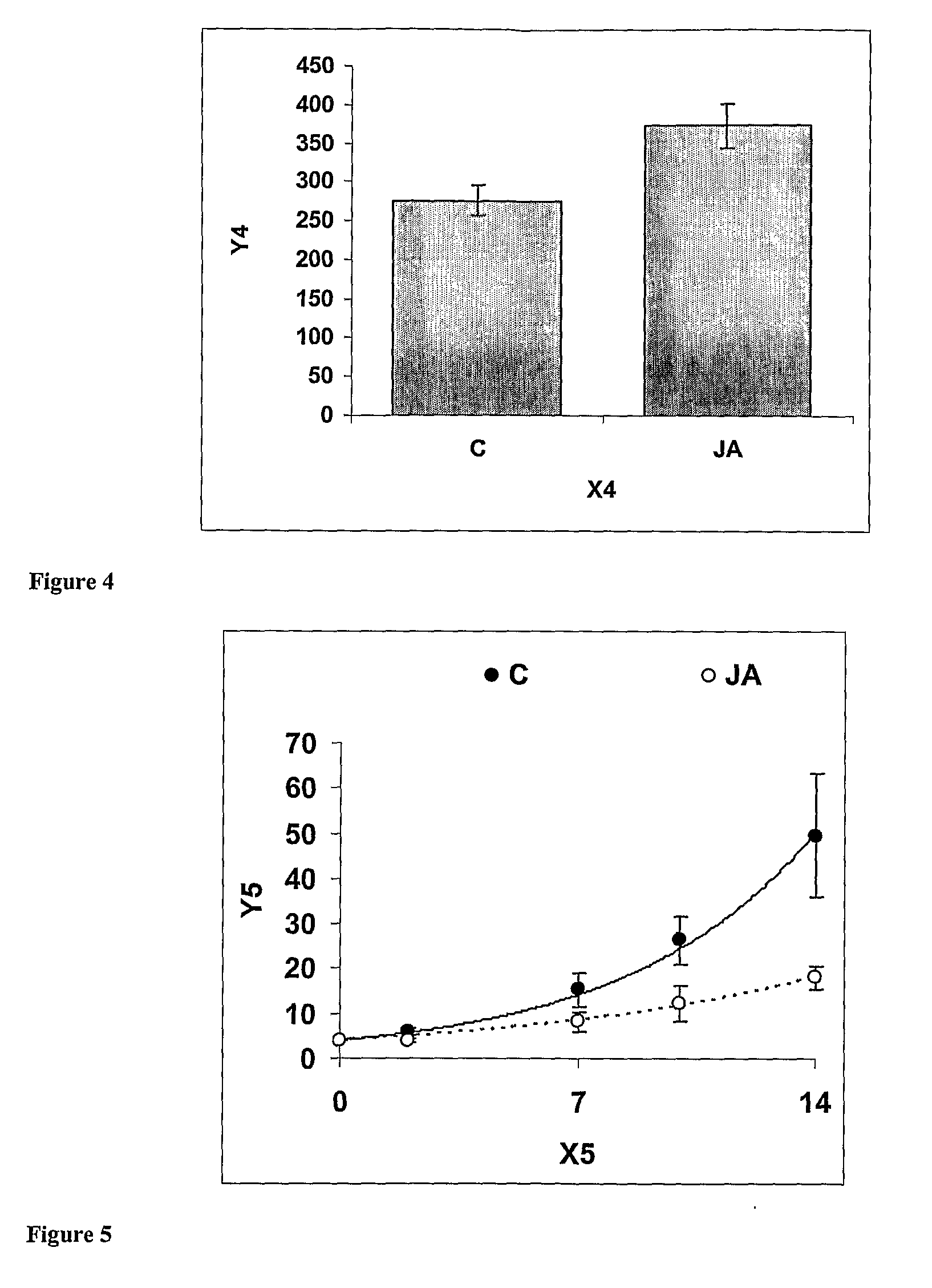Plant protection
- Summary
- Abstract
- Description
- Claims
- Application Information
AI Technical Summary
Benefits of technology
Problems solved by technology
Method used
Image
Examples
example 1
[0142]Seeds of a UK commercial F1 hybrid tomato variety (cv. Carousel) were treated with either 1.5 or 3.0 mM jasmonic acid (JA) and 42.8 mM ethanol in deionised H20 for a period of 24 hours at 4° C. in the dark. Those seeds were then removed from solution and washed in deionised H20 only to remove the JA coating the outside of the seed. Those seed were then germinated in a commercial manner using rockwool blocks and were grown on under glasshouse conditions appropriate to this crop. Plants were challenged with two-spotted spider mite (Tetranychus urticae) 7 weeks after treatment a common crop pest, acting here as a “model herbivore”.
[0143]Visual damage caused by red spider mite attack (the characteristic pale stippling of the leaf surface due to the pest feeding activity) was substantially reduced (FIG. 1—Control and 3.0 mM JA only). The observed resistance induced was significant even 8 weeks after application of the JA to the seeds.
[0144]It was also observed that there was a sign...
example 2
[0152]Seeds of a UK commercial F1 hybrid tomato variety (cv. Carousel) were treated with 1.5 mM jasmonic acid (JA), and plants grown in conditions appropriate to this crop (as described under Example 1). Eight weeks after seed treatment, plants grown from treated seed were challenged with a leaf chewing herbivore by placing two third instar caterpillars of the moth Manduca sexta (tobacco hornworm) on the fifth leaf. Caterpillars were allowed to feed on the plants for four days and the area of grazed leaves was then measured. The leaf area remaining after grazing was significantly higher in plants grown from seed treated with JA than controls (FIG. 4). In addition, caterpillars grazing on leaves of plants grown from seed treated with JA grew 20% less than those feeding on controls. Control seeds were treated with the appropriate ethanol solution but were kept close to plants grown from JA treated seed. The illustrated data are means of 10 replicates ± standard error of the mean.
[0153...
example 3
[0156]In experiments in which seeds of sweet pepper (Capsicum annuum, cv Biscayne) were treated with 1.5 mM jasmonic acid (JA), and plants grown in conditions appropriate to this crop (as described under the Overview). Eight weeks after seed treatment, plants grown from treated seed were challenged with the aphid Myzus persicae. Aphids were allowed to feed on the plants for two weeks and the growth of the aphid population over this period was then measured. There was a significant (p<0.001) reduction in the rate of aphid population growth on plants grown from seed treated with JA (FIG. 5). Control seeds were treated with the appropriate ethanol solution but were kept close to plants grown from JA treated seed. The illustrated data are means of 10 replicates ± standard error of the mean, and the lines are fitted growth curves, which give population growth rates of 0.19±0.011 for controls and 0.11±0.016 for JA treated.
[0157]FIG. 5. shows the effects of JA seed treatments on Myzus pers...
PUM
| Property | Measurement | Unit |
|---|---|---|
| Time | aaaaa | aaaaa |
| Time | aaaaa | aaaaa |
| Molar density | aaaaa | aaaaa |
Abstract
Description
Claims
Application Information
 Login to View More
Login to View More - R&D
- Intellectual Property
- Life Sciences
- Materials
- Tech Scout
- Unparalleled Data Quality
- Higher Quality Content
- 60% Fewer Hallucinations
Browse by: Latest US Patents, China's latest patents, Technical Efficacy Thesaurus, Application Domain, Technology Topic, Popular Technical Reports.
© 2025 PatSnap. All rights reserved.Legal|Privacy policy|Modern Slavery Act Transparency Statement|Sitemap|About US| Contact US: help@patsnap.com



